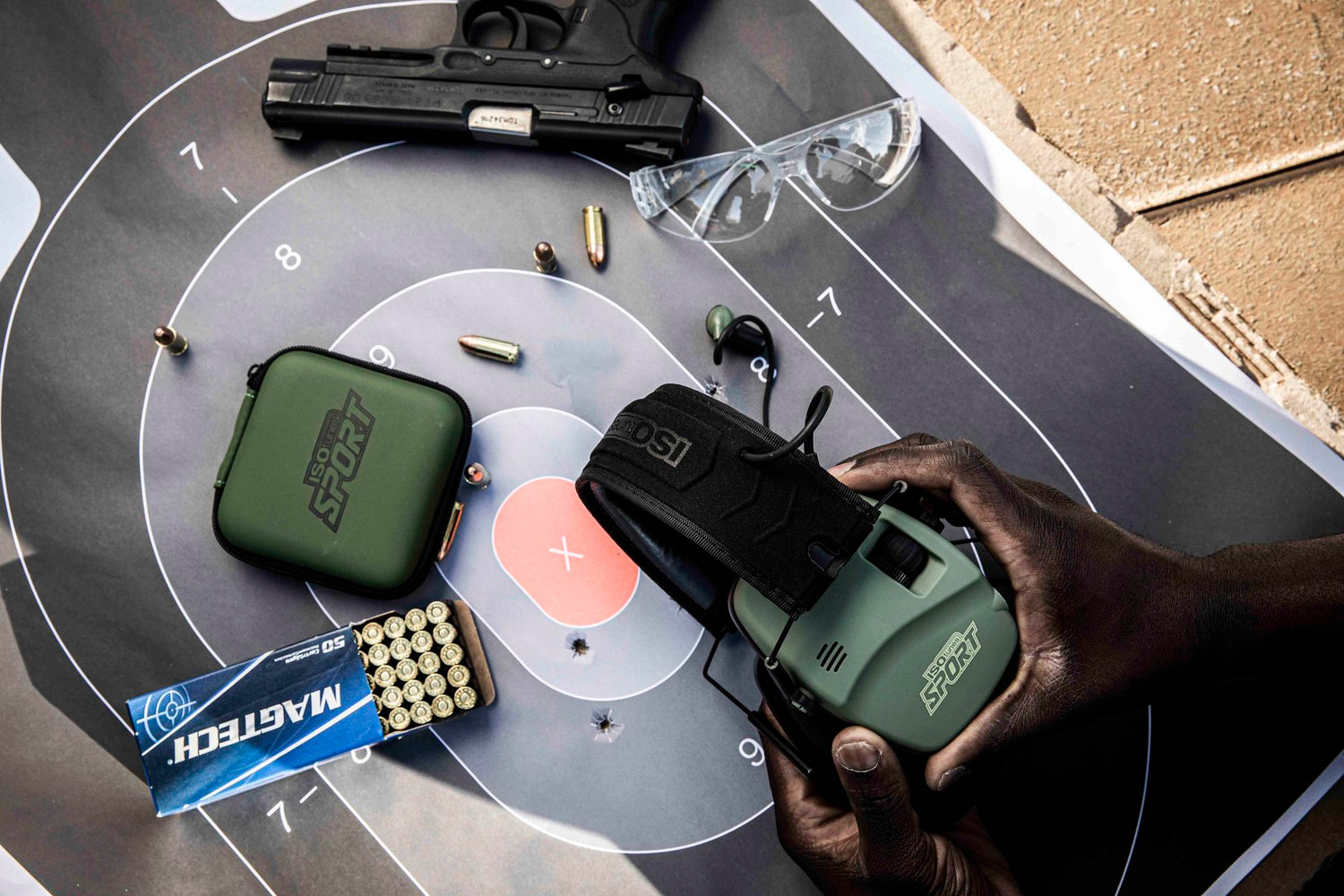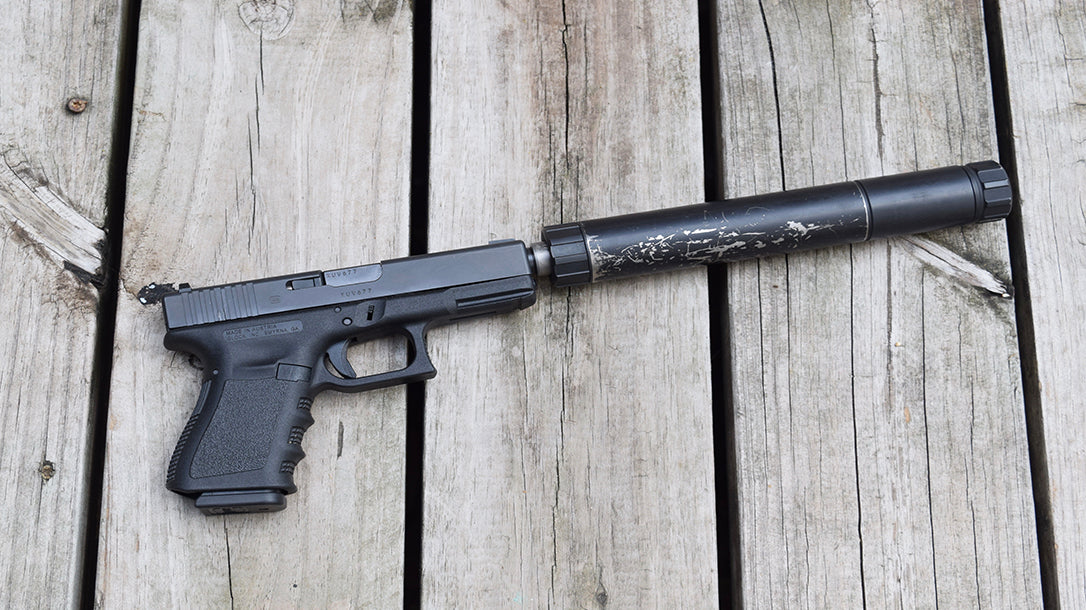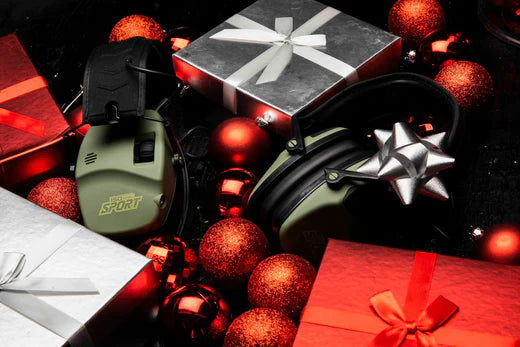What Hearing Protection is Right for Me? A Guide to Choosing the Right Hearing Protection for Hunters and Shooters
ISOtunes Sport Team / December 29, 2021
According to the Centers for Disease Control and Prevention (CDC), exposure to noises over 70 decibels (dB) for a prolonged period of time can lead to hearing damage. Furthermore, exposure to noise over 120 dB can cause immediate hearing damage. When you consider that most firearms omit a sound between 140 and 165 dB, it becomes important to ensure you're wearing proper hearing protection when practicing your aim at the range.
In this post, we'll cover how hunters and shooters can pick the right hearing protection and how ISOtunes can help. Here's a closer look at what you need to know about hearing protection at the gun range:
Hearing Protection: What You Need to Look for
Let's get to the bottom of what you need to look for when it comes to proper hearing protection for hunters and shooters. A good solution should be a mix between personal preference, comfortability, and effectiveness. Here's a closer look at the considerations you should be weighing:
High NRR

NRR stands for "noise reduction rating," which is defined as a unit of measurement to help determine the effectiveness of any device designed to protect your hearing. The higher the NRR number, the better protection offered. Every hearing device must be tested and approved by ANSI-accredited labs. If it is not, then it’s not suited to protect your hearing in loud environments.
NRR is measured in decibels, but there's a bit of a caveat to properly determining how much hearing protection each device will offer. A hearing protector’s NRR is measured for the perfect fit, which means user error and improperly wearing the device can decrease its effectiveness.
Noting this, what's the ideal NRR for shooting? Most experts advise wearing a device that offers an NRR of at least 28. Some even advise that shooters wear double ear protection at the gun range, largely due to how close the firearm is to the ear when shooting and to help protect against both the sound of the initial discharge and the subsequent echo. In this case, both earplugs and earmuffs should be considered - sometimes in tandem.
Electronic Hearing Protection
Whether you're in the blind or at the gun range, most shooters still want to be aware of their surroundings. It's good safety practice. So how can you properly protect your ears while staying connected to the world around you? That’s where electronic hearing protection can help. Most commonly offered in earmuff styles, these types of active hearing technologies have small microphones on the devices that help pick up sounds and help amplify them for the shooter. The shooter can sometimes control the level of volume that they receive these sounds, though the volume at which they're received is usually capped at a safe decibel level.
Think of electronic hearing protection as hearing aids that improve safety for shooters in multiple ways. One, they can effectively keep their ears safe from the sounds of a firearm discharge. And two, they can keep shooters better connected with whatever is going on around them by amplifying sounds that they need to be aware of. At the range, shooters will be able to pick up conversations and commands easily. In the blind, hunters will be able to hear game as it approaches.
Quality, Reputable products
There's a big difference between a proper hearing protection device and conventional headphones or earbuds. As we mentioned above, proper hearing protection devices have an ANSI-certified NRR. Standard headphones or earbuds do not. And while any type of listening device can offer some amount of noise reduction, it's nowhere near the level of a properly fitted and rated hearing protector.
The bottom line is that when you're at the range or in the blind, you need to be wearing a proper device. Make it a part of your PPE. Don't just assume that any type of earbud will do the trick. Look for brands with a proven track record producing safety products or expertise in the shooting industry. And always remember to check user reviews before you buy!
ISOtunes has won the Pro Tool Innovation Award three years in a row for excellence in hearing protection.
The Right Style
 Like we said earlier in this piece, hearing protection should be a mix of device effectiveness, comfortability, and personal preference. And part of the latter point involves selecting the best style. Here's a brief overview of the hearing protection styles:
Like we said earlier in this piece, hearing protection should be a mix of device effectiveness, comfortability, and personal preference. And part of the latter point involves selecting the best style. Here's a brief overview of the hearing protection styles:
Bonus Features
Hearing protection has evolved quite a bit over the years, and many brands now include innovative features to enhance the user’s safety, performance, and overall experience.
The Physical Process of Hearing Damage
A gunshot produces impact noise, which is different from airborne noise. Impact noise is a physical assault on a solid object. In this case, the solid object is the bony structures of your ear. The impact noise from a gunshot is concussive and damaging, not only echoing around the inside of the ear, but also causing a physical impact within the ear.
Your ear is a series of parts — the eardrum, the tiny hair-like cells in your ear, plus the liquid sac called the cochlea. When you fire a gun without hearing protection , the impact noise can cause the tiny hair-like cells in your ear to shift positions, resulting in temporary hearing damage. If exposure is minimal, the cells should return to their normal shape within a few hours. In more severe cases with prolonged exposure, impact noises can lead to tinnitus, irreversible hearing loss, or even deafness.
Tinnitus — an ongoing ringing or noise in your ears that does not stop and may last indefinitely.
Tinnitus is an annoying condition. For some, the buzzing or ringing sounds in their ears never go away. It’s not only caused by having your ear near the chamber when firing a gun, but can be initiated just by being near a gun as it is fired.
Contact isotunes sport today
With a range of hearing protection devices in both the in-ear and over-ear styles, ISOtunes Sport is your reputable, high-quality brand for all of your hearing protection needs. For more information and to browse our line of hearing protection devices for hunters and shooters, contact us or visit our store today.



